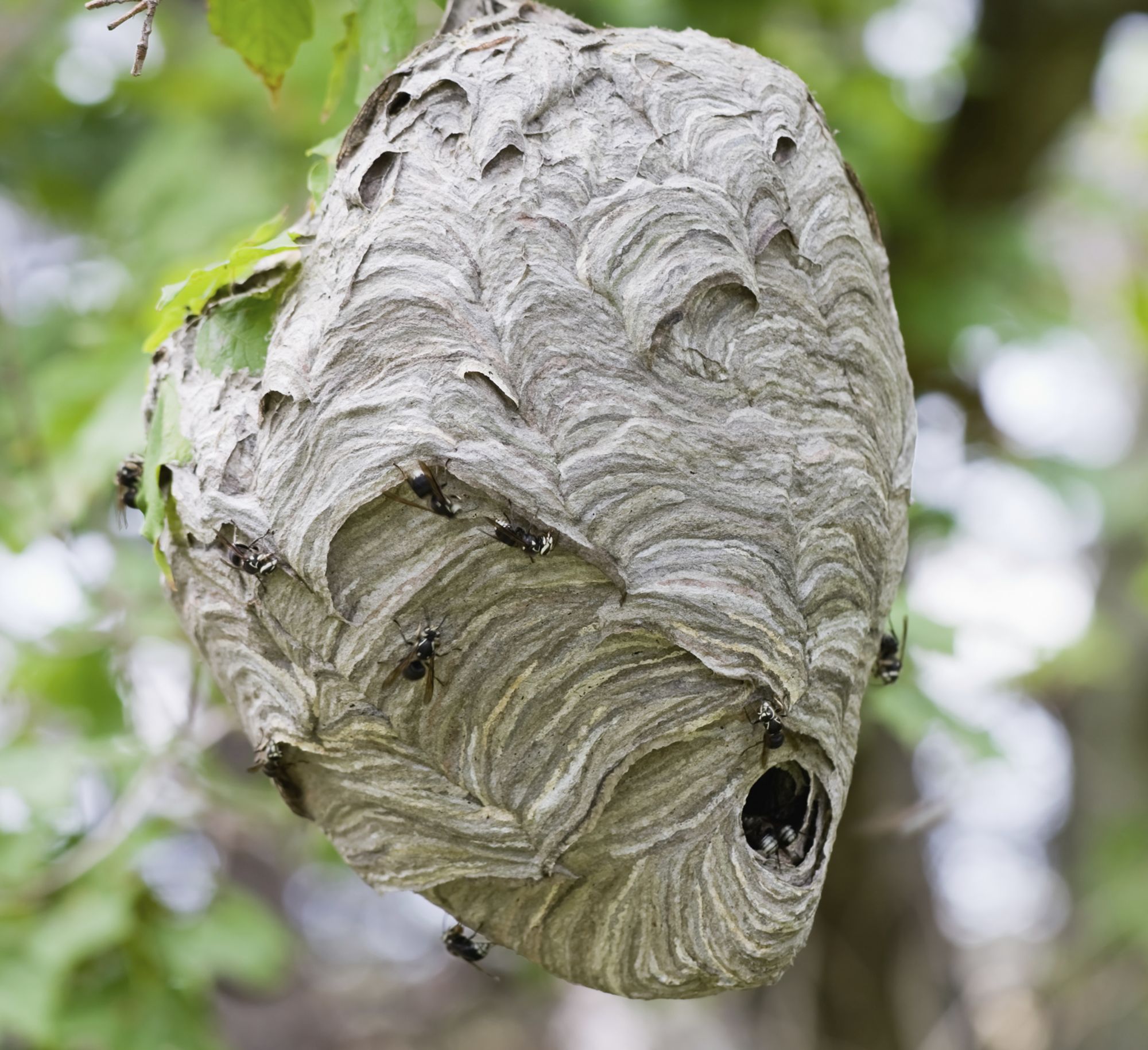Bald faced hornets can travel up to half a mile (2,640 feet) from their nest in search of food and resources. This article delves into the factors that influence the bald faced hornet range, exploring the hornet nest distance from resources, the bald faced hornet foraging distance, and other key aspects of their behavior.
Image Source: images.terro.com
Fathoming the Travel Habits of Bald Faced Hornets
Bald faced hornets, despite their intimidating appearance, are fascinating creatures with distinct travel patterns. Several elements determine how far do hornets fly from their nests. These include food availability, weather conditions, and the size and needs of the colony. Let’s look at how these factors impact their movements.
The Influence of Food Availability on Hornet Travel
The primary driver behind a bald faced hornet’s travel distance is the quest for food. These hornets are predators, feeding on insects, nectar, and other sources of protein and carbohydrates.
-
Abundant Food Sources: If a nest is situated near a plentiful supply of insects or flowering plants, the hornets may not need to venture far from the nest. This reduces the bald faced hornet travel radius.
-
Scarce Food Sources: Conversely, if food is scarce near the nest, hornets must travel greater distances to find enough to feed themselves and their developing larvae. This expands the distance bald faced hornets search for food.
Weather’s Role in Hornet Flight
Weather conditions significantly influence the activity and travel patterns of bald faced hornets.
-
Ideal Conditions: Warm, sunny days are perfect for hornet activity. They can fly efficiently and cover considerable distances in search of food.
-
Unfavorable Conditions: Cold, rainy, or windy weather limits their ability to fly. During these times, they typically remain closer to the nest, conserving energy and waiting for better conditions.
Colony Size and Its Impact
The size of the hornet colony also plays a crucial role in determining how far they travel.
-
Small Colonies: Smaller colonies have fewer mouths to feed. Therefore, their foraging needs are less extensive, and the hornets may not need to travel as far.
-
Large Colonies: Larger colonies, with hundreds or even thousands of individuals, require a significantly greater amount of food. This forces the hornets to expand their bald faced hornet activity range and fly farther from the nest to find sufficient resources.
Defining Hornet Territory
The concept of hornet territory size is not as clearly defined as it is for some other animals. Hornets do not typically defend a specific area against other colonies of the same species. Instead, their “territory” is more of a foraging range, encompassing the area within which they actively search for food and resources.
Factors Shaping Territory Boundaries
-
Resource Distribution: The availability and distribution of food sources, water, and nesting materials largely determine the boundaries of a hornet’s foraging territory.
-
Competition: While bald faced hornets do not aggressively defend territory against their own species, they may encounter competition from other insects or animals that share the same food sources.
-
Physical Barriers: Natural or man-made barriers, such as dense forests, large bodies of water, or buildings, can also influence the shape and size of a hornet’s territory.
Nesting Habits of Bald Faced Hornets
The nesting habits of bald faced hornets are crucial to understanding their overall behavior and travel patterns.
Nest Construction and Location
Bald faced hornets build their nests from chewed wood pulp, creating a paper-like material. Nests are typically located above ground, often in trees, shrubs, or under eaves of buildings.
Life Cycle Within the Nest
The hornet life cycle plays out entirely within the nest, from egg-laying to larval development to pupation and emergence as adult hornets. The queen initiates the colony in the spring, and worker hornets take over the tasks of nest building, foraging, and caring for the young.
The Importance of Proximity
The location of the nest relative to food sources and water significantly impacts the hornets’ daily travel patterns. Nests built near plentiful resources will require shorter foraging trips compared to those built in areas with scarce resources.
Examining the Bald Faced Hornet Activity Range
The bald faced hornet activity range is the area within which they are most likely to be seen and encountered.
Daily Activity Patterns
Bald faced hornets are diurnal, meaning they are active during the day. Their activity typically peaks during warm, sunny hours when they can efficiently forage for food.
Seasonal Activity
Their activity also varies seasonally. They are most active during the summer and early fall when the colony is at its peak size and food demands are highest. As temperatures drop in the late fall, their activity declines, and the colony dies off, with only the queen surviving to start a new colony the following spring.
Mapping Activity
While it’s not practical to precisely map the activity range of individual colonies, general observations can help estimate the area within which they are likely to be found. This is particularly important for homeowners concerned about hornet nest proximity to homes.
Keeping Your Distance: Hornet Nest Proximity to Homes
Many people are concerned about the hornet nest proximity to homes. Bald faced hornets are known for their aggressive behavior when they feel threatened. Understanding how far they travel and their nesting habits can help homeowners take steps to minimize encounters.
Assessing Risks
-
Nest Location: If a nest is located close to a home or high-traffic area, the risk of stings increases.
-
Activity Levels: Observe the level of hornet activity around the nest. Higher activity indicates a larger, more active colony.
Prevention Strategies
-
Landscaping: Keep trees and shrubs trimmed to reduce potential nesting sites.
-
Food Sources: Eliminate potential food sources near the home, such as open garbage cans or uncovered compost piles.
-
Professional Help: If a nest is located too close to a home or poses a significant threat, it is best to contact a professional pest control service for safe removal.
Tips for Coexisting with Bald Faced Hornets
While bald faced hornets can be intimidating, coexistence is possible with proper precautions.
-
Avoid Disturbing Nests: Do not approach or disturb nests, as this can provoke aggressive behavior.
-
Protective Clothing: If you must work near a nest, wear protective clothing, including long sleeves, pants, and a hat.
-
Stay Calm: If a hornet approaches, remain calm and avoid swatting at it, as this can provoke a sting.
Hornet Stings: What to Know
Bald faced hornet stings can be painful and, in some cases, dangerous.
Understanding the Venom
Hornet venom contains various compounds that cause pain, inflammation, and allergic reactions.
Symptoms of a Sting
Symptoms of a sting can range from localized pain and swelling to more severe allergic reactions, such as difficulty breathing, hives, or anaphylaxis.
Treatment Options
-
Mild Reactions: Treat mild reactions with over-the-counter pain relievers, antihistamines, and cold compresses.
-
Severe Reactions: Seek immediate medical attention for severe allergic reactions. Individuals with known allergies should carry an epinephrine auto-injector (EpiPen).
Distinguishing Bald Faced Hornets from Other Species
It’s essential to differentiate bald faced hornets from other wasps and hornets.
Key Characteristics
Bald faced hornets are easily recognizable by their black and white markings, particularly the white markings on their face, which give them their name.
Similar Species
-
Yellowjackets: Yellowjackets are smaller and have yellow and black markings.
-
Paper Wasps: Paper wasps are more slender and build open-comb nests.
Why Identification Matters
Accurate identification is crucial for determining the appropriate course of action, whether it’s simply avoiding the nest or seeking professional pest control services.
Conclusion
The question “How far do bald faced hornets travel from their nest?” is complex. A variety of factors, including food availability, weather, and colony size, all influence their bald faced hornet range. By gaining insights into the nesting habits of bald faced hornets, their bald faced hornet foraging distance, and the factors affecting hornet territory size, homeowners can take proactive steps to minimize risks and coexist safely with these fascinating insects.
Frequently Asked Questions (FAQ)
Q: What is the average distance a bald faced hornet travels from its nest?
A: Bald faced hornets typically travel up to half a mile (2,640 feet) from their nest in search of food.
Q: Can I predict where a bald faced hornet will build its nest?
A: It’s difficult to predict exactly where they will build a nest, but they prefer above-ground locations like trees, shrubs, or under eaves of buildings.
Q: Who is most at risk of being stung by a bald faced hornet?
A: Individuals who disturb or approach nests are most at risk, as are those with allergies to insect stings.
Q: How far should I stay away from a bald faced hornet nest?
A: It is best to maintain a distance of at least 20 feet from a nest to avoid provoking the hornets.
Q: What happens to bald faced hornets in the winter?
A: Only the queen survives the winter. The rest of the colony dies off, and the queen emerges in the spring to start a new colony.

Hi, I’m Candace Wafford, a travel and food blogger based in Lexington, Kentucky. As a corporate traveler, I’ve had the chance to explore a lot of places, but now I’m on a mission to travel full-time. My goal? To figure out how to take my cat along for the adventure! Here at destinationdorworth.com, I share my experiences and tips on outdoor activities, travel, and of course, the best food spots I come across. I hope my blog inspires you to explore more and eat well on your journeys!

